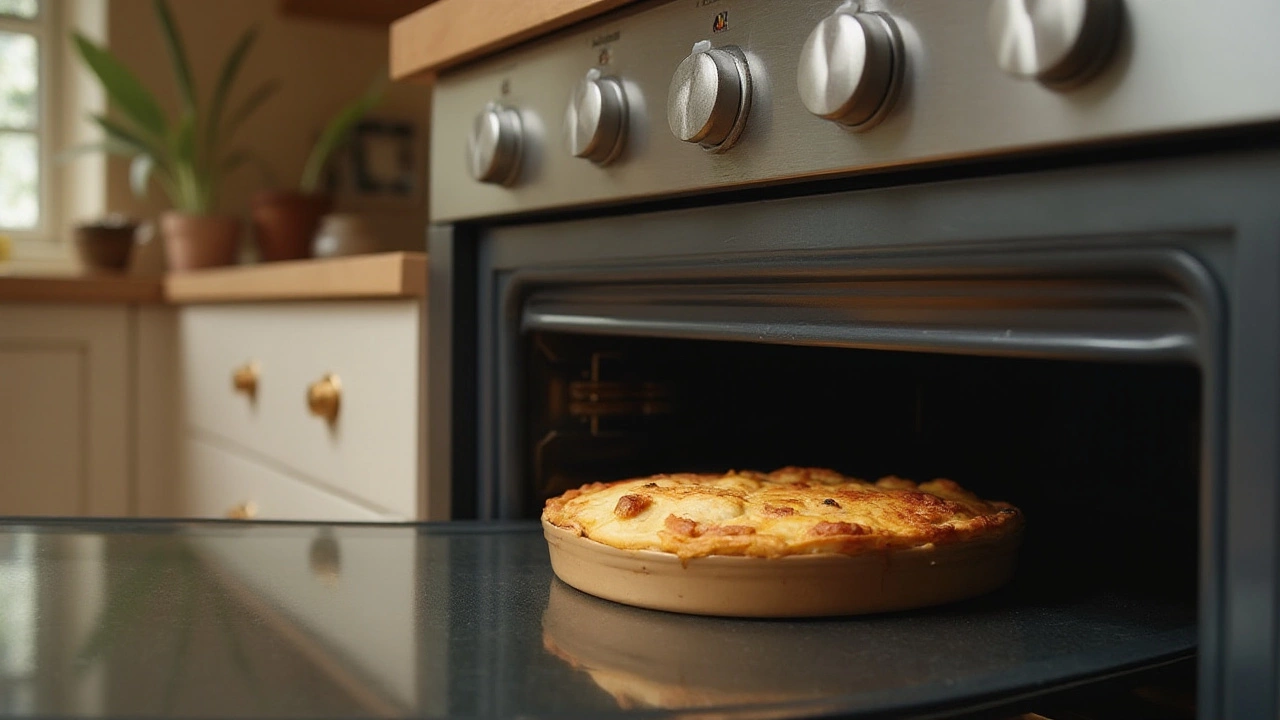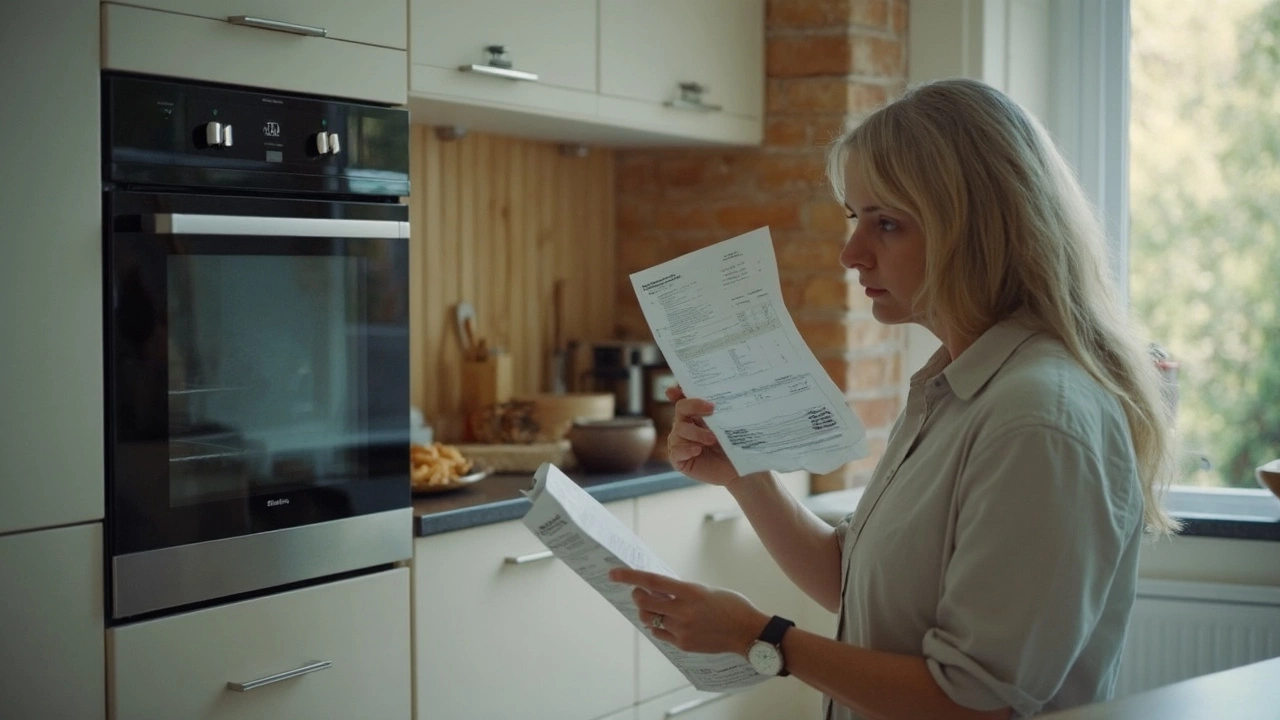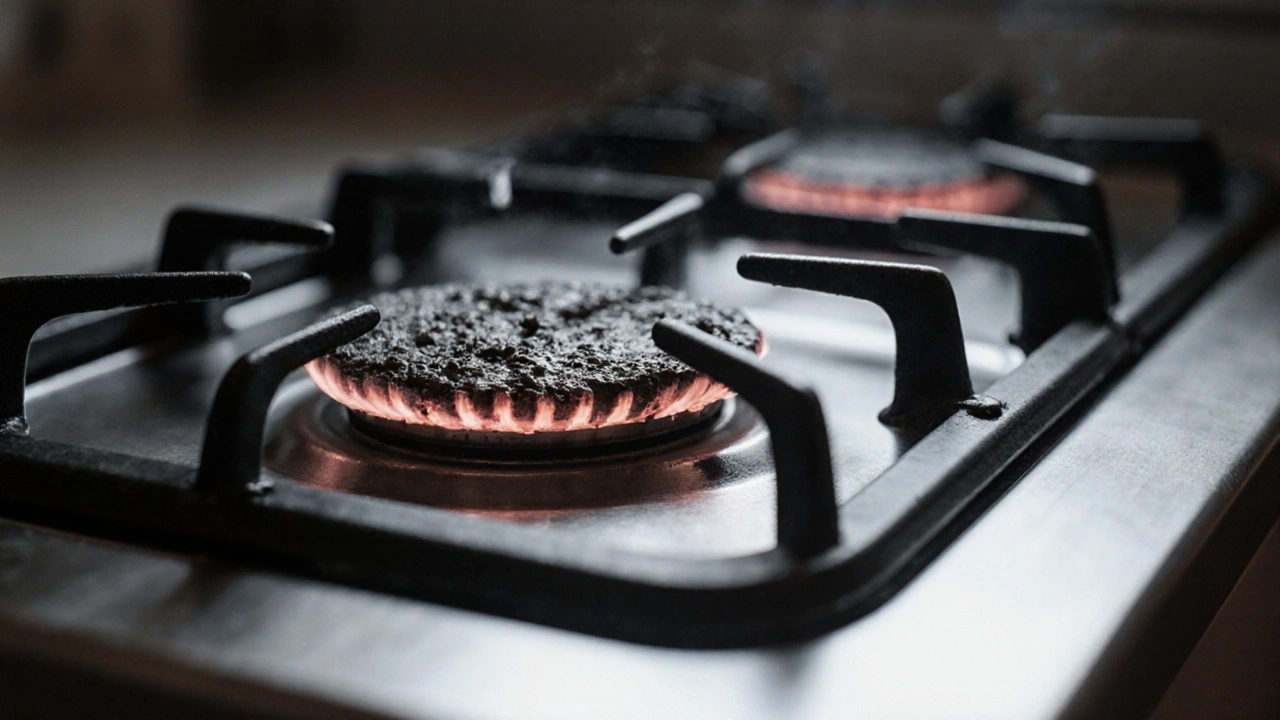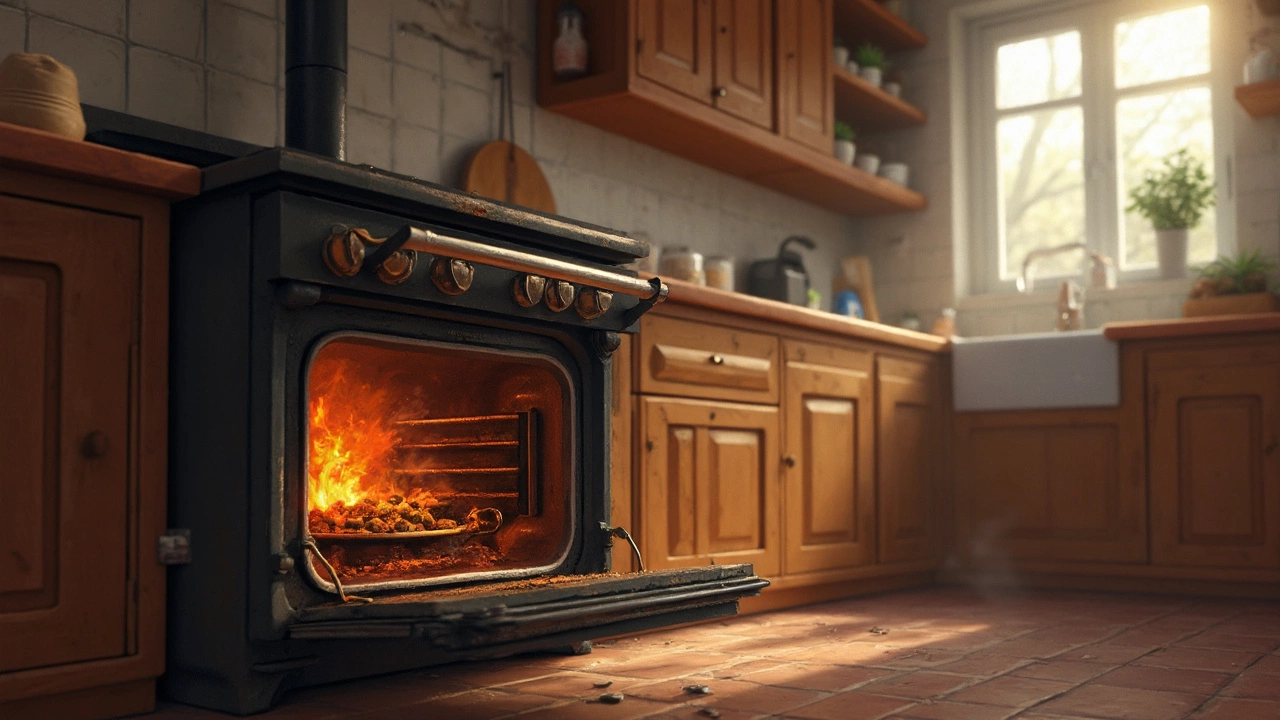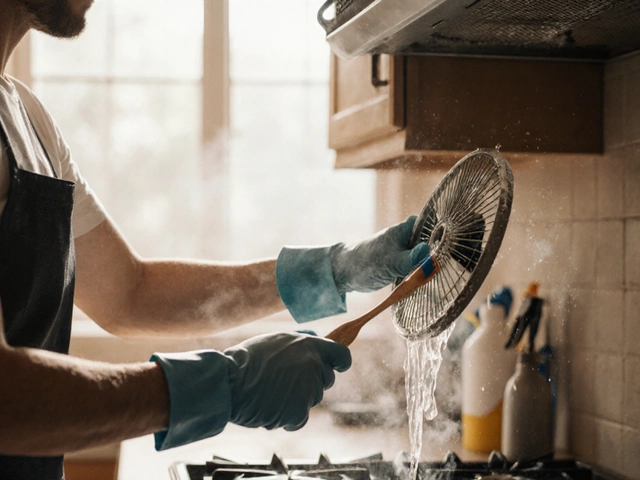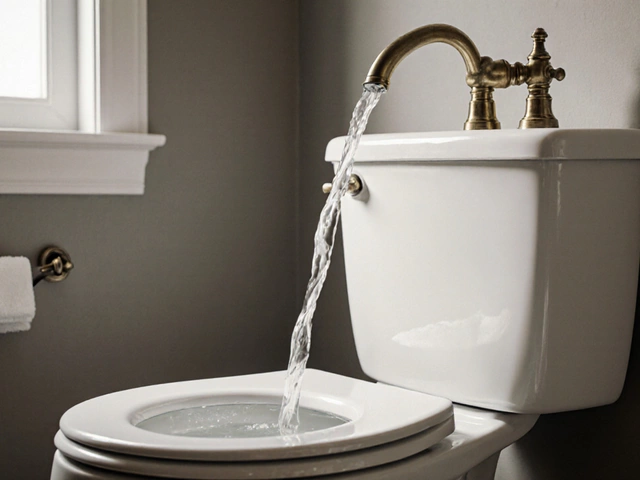For many home cooks, the electric oven is a trusty sidekick in the kitchen. Yet, when it starts acting up, it can throw a wrench in even the best-laid dinner plans. Understanding the common faults these appliances face can help you troubleshoot and potentially fix issues without the need for professional help.
In this guide, we explore typical problems like uneven heating, electrical mishaps, strange sounds, and door issues. Armed with this knowledge, you can ensure your oven continues to cook up culinary delights with ease.
- Uneven Heating and Temperature Fluctuations
- Electrical Problems and Power Failures
- Unusual Noises and Odors
- Door and Seal Malfunctions
Uneven Heating and Temperature Fluctuations
One of the most frequently met problems with electric ovens is uneven heating, which can lead to frustration and spoiled meals. Imagine you've spent countless hours preparing a dish, only to have it come out burnt on one side and undercooked on the other. This common issue often roots in several factors, ranging from faulty heating elements to inaccurate thermostats and poor oven calibration. Identifying the proper source of the problem is the first step towards a solution and can save you both time and money in the long run.
Heating elements are the prime suspects when it comes to uneven temperatures. If one of these components is damaged or worn out, it fails to distribute heat evenly across the oven. A telltale sign of a malfunctioning heating element is visual: often, you might notice that one part of the element doesn't glow as brightly as the others when the oven is on. Testing each element individually can confirm whether they are working correctly. If you find an issue, replacing the element is usually a straightforward task. However, safety must always come first, so make sure to disconnect your appliance from the power source before attempting any repairs.
Next up, consider the oven's thermostat—a small but crucial part that regulates temperature. A malfunctioning thermostat can mislead the oven into heating to the incorrect temperature, resulting in those pesky fluctuations. In some cases, recalibrating your thermostat following your oven's manual instructions can fix this problem. However, if recalibration doesn’t solve the issue, replacing the thermostat might be necessary. Again, this is something you can often do on your own with the proper guidance, just be cautious and consult a professional if uncertain.
Sometimes, the issue isn't mechanical but human-made due to improper placement of racks or cookware. Overloading the oven or positioning racks too high or too low can disrupt airflow and heat distribution, resulting in uneven cooking. A simple rearrangement of racks or adjusting the amount of food cooked at once can make a world of difference. To avoid such mishaps, always aim to leave some space around each dish, allowing hot air to circulate efficiently.
"A professional baker once told me, 'It's as important to understand your oven as it is to perfect your recipes.'"
In modern ovens, sometimes a power-saving feature adds to the confusion. While aimed at efficiency, these features can cause temperatures to drop unexpectedly, altering cooking times. Check your oven's manual for any such settings and see if they might be affecting your cooking performance. Lastly, double-check that your oven door seals are intact. Heat will escape if these seals are worn or damaged, causing temperature drops and inconsistent heating. Regularly inspecting and replacing seals can prevent heat loss, making sure your cooking is as precise as possible.

Electrical Problems and Power Failures
When an electric oven suddenly won’t turn on, there's a good chance that electrical problems or power failures are at play. One of the first steps in diagnosing the issue is to check your circuit breaker. Ovens are heavy-duty appliances that draw considerable power, so they often have a designated circuit. A tripped breaker can immediately cut power to your oven, making it seem like it's broken when the fix is just a quick reset away. Checking the power cord is another simple but essential maintenance practice when dealing with power issues. Make sure the plug is firmly seated in the outlet, as any looseness can disrupt the power supply and lead to inconsistencies.
Sometimes ovens won't power up due to faulty wiring within the unit itself. This is particularly the case for older models or those that have experienced frequent use over the years. You see, wires can become loose or corroded over time, leading to potential power failures. If you suspect internal wiring issues, it's usually best to consult a qualified technician to avoid the risk of electrical shock. They can safely open up the oven, identify corroded or disconnected wires, and either repair or replace them.
In rare situations, the problem may stem from the oven's own control board, which serves as the brain of the appliance. If its circuitry fails for any reason, the oven might stop responding entirely. This kind of issue often requires a detailed diagnostic by professionals who have a good grasp of digital agitating technologies. Sometimes, replacing the control board is the only solution, though it's usually a last resort.
"Ovens today have become increasingly sophisticated, and so has their troubleshooting. What appears to be a simple power glitch can sometimes be a more complex electrical failure," says James McCarthy, a renowned appliance repair expert and author of 'Modern Appliances Demystified.'
Additionally, an oven that intermittently loses power can often be traced back to thermal fuses or thermostats. These components are designed to shut off power if the oven overheats. Burned-out thermal fuses will need replacement and this can typically be done with standard tools. Make sure to refer to the owner's manual for specifications to get the right replacement parts.
If these solutions don't resolve the issue, hiring an expert becomes inevitable. Be mindful that frequent power failures might also reflect issues within your building's electrical grid. If this is the case, consult with an electrician to tackle problems at that level. Returning the electric oven to reliable service will always require a methodical approach, whether by your own hands or through a professional's expertise.
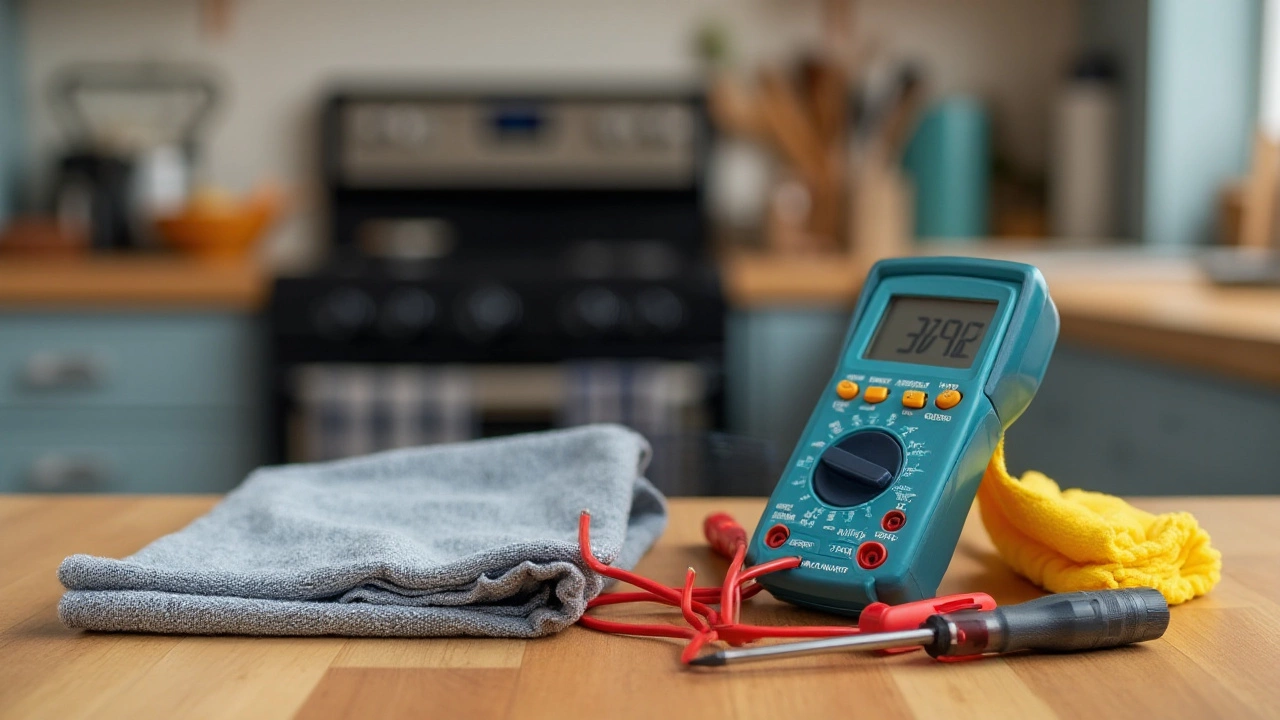
Unusual Noises and Odors
Unwelcome noises and strange smells can turn your kitchen from a cozy sanctuary into a source of frustration. When your electric oven starts broadcasting sounds that rival an orchestra and smells reminiscent of alchemy gone wrong, it's time to pay attention. Many people report unusual sounds like humming, rattling, or even banging coming from their ovens. These noises often have logical explanations and, thankfully, useful solutions.
For instance, a humming sound could be due to the cooling fan, which is designed to operate efficiently while emitting a minimal noise level. But if it grows louder, it may have collected dust or been knocked off balance. A rattling noise might indicate something as simple as a loose panel or, more critically, a mechanical part bearing stress, like a worn-out motor or a misaligned element. Listening carefully to your oven can help you identify the source of the noise, guiding you to remedy the issue.
Odors can also be alarming, particularly if they linger long after the cooking is done. New ovens often come with peculiar smells due to manufacturing residues, requiring a preliminary run to "burn off" these substances. However, persistent unfamiliar odors might indicate burnt food remnants that have accumulated out of sight, often in the drip pans or inner layers. A thorough cleaning can usually resolve such issues, restoring the scent of warmth and home back to your kitchen.
Consistent exposure to smoke or burning smells can also indicate a malfunction in the oven's heating elements, sometimes caused by electrical shorts. In such cases, consulting a professional for oven repair might not only solve the problem but also prevent potential safety hazards. According to an insightful piece from a reputable maintenance journal, "Regular maintenance and attentive listening are crucial in extending the lifespan of your kitchen devices."

Door and Seal Malfunctions
The door and the seal of an electric oven might not seem like they do much, but they play a vital role in maintaining the right cooking conditions. If your oven's door isn’t closing properly, heat can escape, causing uneven cooking and higher energy usage. A problematic seal, too, can defeat the purpose of having a powerful oven, as it will let out the hot air that is essential for cooking food evenly and thoroughly.
One common sign of door issues is when you notice the oven takes longer to reach the desired temperature and the kitchen seems warmer than usual. Wear and tear of the gasket, the rubber-like seal inside the door, can cause heat leakage. Frequent opening and closing of the oven door can lead to misalignments or loosen the hinges over time. Additionally, spills and debris can weaken the gasket's hold, leading to unavoidable gaps.
Replacing an oven gasket is generally straightforward. It’s advised to regularly inspect the gasket for signs of wear, such as cracks or brittleness. Cleaning it with mild soap and water can enhance its longevity but knowing when to replace it is equally important. Here’s a simple step-by-step guide for the handy homeowner: refer to your electric oven repair manual to find the correct replacement part number, order a new gasket, and fit it into the groove by pressing it firmly until you sense it is secure. A little bit of elbow grease may be required, but it’s rewarding!
A persistent oven door problem may also be mechanical. Hinges and springs are responsible for smooth operation, and any faults here could result in the door failing to close fully. To identify hinge issues, open the door fully, then gently close it. If it doesn’t close smoothly, or you feel resistance, the hinges might need replacement. Such tasks can be intricate as they often involve disassembling parts of the door frame. Manufacturers generally recommend reaching out to a professional for any intricate tasks beyond seal replacement to avoid potential damage.
“Cooking is all about patience and heat retention – a slight fault in your oven door could make all the difference in the world.” - Home Appliance Experts Journal
For those comfortable with tools, here’s a quick tip: a door that's misaligned might just need a tightening of the screws on the hinges. Keep a screwdriver at hand, and remember to turn off the power before making adjustments. Whether it’s a case of simple tightening or part replacements, careful attention to the details can save you from the inconvenience of an improperly functioning oven. Regularly attending to these small, yet significant components can ensure that your electric oven remains the reliable kitchen companion you count on.
